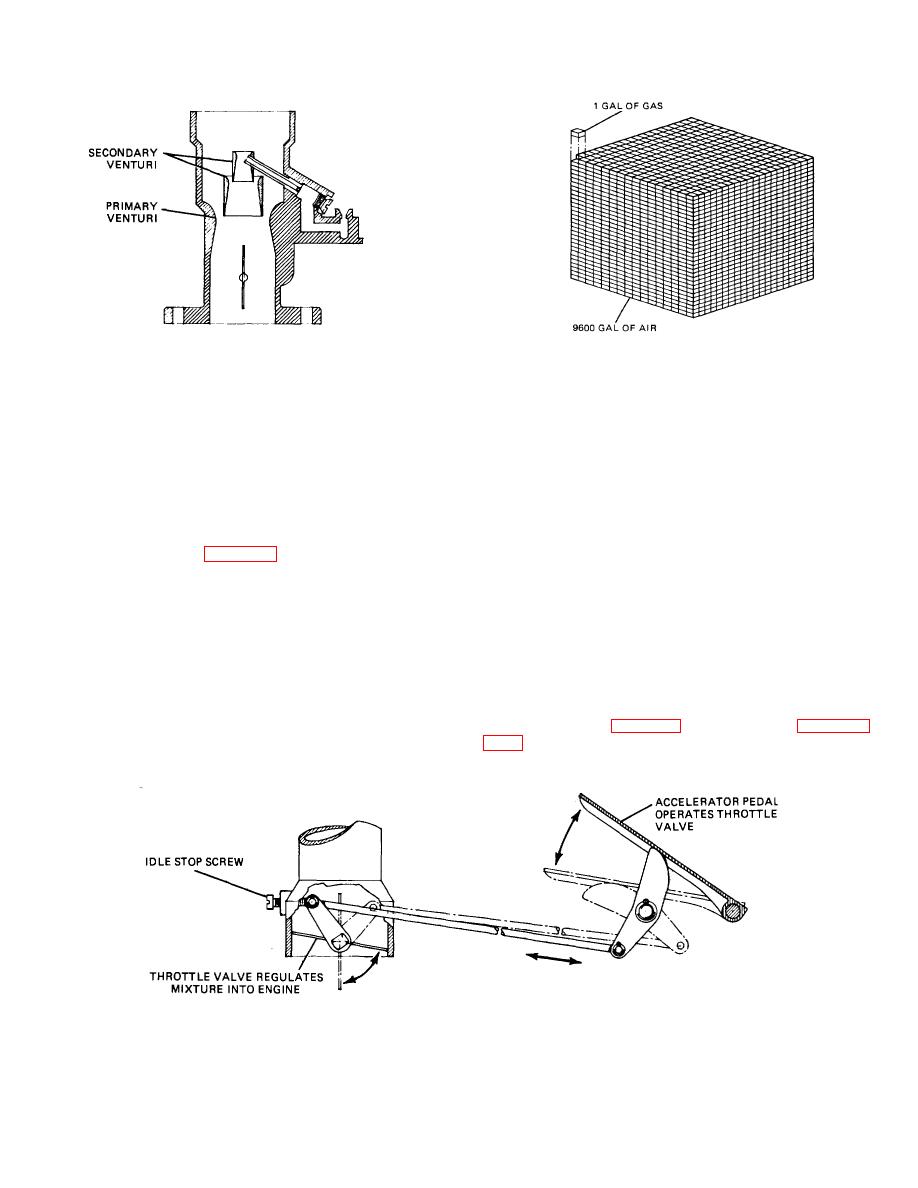
| Tweet |

Custom Search
|
|

|
||
 TM 9-8000
Figure 4-24. Air-Fuel Ratio Demonstration.
Figure 4-23. Secondary Venturi.
volume rather than weight, it would be seen that a
to be lean mixtures. A gasoline engine, propelling a
gasoline engine operating on an air-fuel ratio of 15:1
vehicle at a steady speed, operates on an air-fuel ratio of
consumes approximately 9600 gallons of air for every
approximately 15:1. Considering that gasoline weighs
gallon of gasoline.
approximately 640 times as much as air, it can be seen
that a gasoline engine consumes a tremendous amount
of air. If, in fact, the air-fuel ratio was considered by
Section III CONSTRUCTION OF THE BASIC CARBURETOR
4-14. Float Circuit.
used to regulate the speed and power output of the
a. Purpose. The float circuit maintains a steady
engine. It is controlled by the accelerator pedal, and
usually consists of a flat, round plate that tilts with the
working supply of gasoline at a constant level in the
throttle shaft. As the accelerator pedal is fully depressed,
carburetor.
This is very critical to proper engine
the throttle valve is moved from a position of completely
performance. An excessively high float level will cause
restricting the throat to being completely open. The idle
fuel to flow too freely from the discharge tube, causing an
stop screw is used to keep the throttle valve open slightly
overly rich mixture; whereas an excessively low float level
so that the engine may run at a regulated idle speed with
will cause an overly lean mixture.
no foot pressure on the accelerator. This screw may be
b. Operation (Fig. 4-26). As explained in paragraph
turned in or out to regulate engine idle speed.
the
fuel
pump
delivers
gasoline
to
TA233400
Figure 4-25. Throttle Valve.
4-15
|
||
 |
||